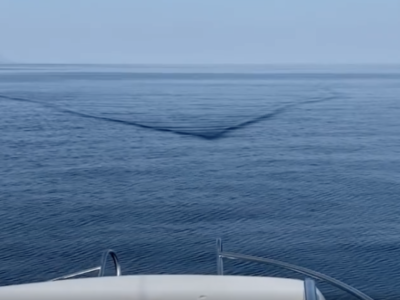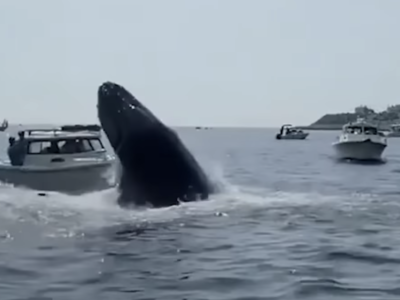While the surf community likes to see the green, yellow and red colors in our dive reports, the dive community loves to see a lot of dark blue in the nearshore maps.
Many divers are also loyal SURFERforecast premium members.
“As an avid Southern California scuba diver I find these maps invaluable for planning my diving days.
The easy to interpret interface and the accuracy make this site a dive planning must have. The “blues” don’t get us divers down! The darker the better for us 😉.
Thank you Surfable & SURFERforecast” – Gayle G
We have 10-Day nearshore surf height, wind and period for the entire coastlines of Southern California, The Channel Islands, Northern California, Hawaii, the North Shore of Oahu.
Nearshore surf conditions:
Weather is an important (if not the most important) factors for predicting dive conditions above and below the surface for most spots, which is why you need a good forecast. Our animated 10-Day forecast maps offer unique (and extremely closeup views) of the Scuba diving, freediving and snorkeling conditions along the coast. The darker blue in our maps usually correlates to small surf and ideal underwater visibility.
View this post on Instagram
Live Conditions and 10-Day Forecasts
Nearshore wind:
Our nearshore wind and weather animated maps from Windy to help you select ideal dive conditions.
Tides and Surge Report:
Currents and tidal surge are another important factor for ideal dive conditions. *Be sure to do your research about entry/exit locations for each dive site, because tide can have a huge impact on the conditions as well. There is a good in-depth article from Dive Training that goes more in depth about what and how to be more informed when planning your dives.
Here is an example of smaller surf and better dive conditions in Orange County, San Diego and La Jolla, San Diego.
What Are The Best Dive Conditions?

There are so many different factors that can affect your dive: water temperature, swell height, wind, weather, currents, visibility and even the time of day all have an impact on how enjoyable and safe a dive can be. If you’re new to diving or want to get the most out of your next trip underwater, it’s important to know what the best dive conditions are for you. The best dive conditions will depend on where you’re diving and what you’re looking for from your experience. Some things are universal though, such as clear water, few natural hazards and also dive depth & decompression time. Here is some advice on what the best dive conditions are depending on where you plan to go diving.
The best dive conditions for beginners
If you’re a complete beginner, you might want to dive in the warmest water possible. The warmest water is usually in the Summer in California or year-round in the tropics, and it’s easier to get used to diving in warm conditions. The best dive conditions for beginners are warm water, minimal current and a low amount of (large) marine life. This will allow you to get used to scuba in a low-pressure environment. You might also want to start with freediving or snorkeling, which will allow you to dive without getting used to breathing underwater through a mouthpiece.
The best conditions for enjoying marine life
When you decide to dive with a specific goal in mind, it can make your experience much more enjoyable. If you want to dive to see as much marine life as possible, you’ll want to choose the best dive site and conditions for those sea creatures. It goes without saying that the ocean is very diverse and each stretch of coast will reflect that diversity in marine life.
Tropical water is usually a good choice, as the temperature of the water is ideal for a wide range of marine life. You might also want to dive in the morning, as this is when many creatures are more active. Get as far away from human activity as you can, and take advantage of the natural light at that time of day.
The best condition for clear visibility
Most divers are obsessed with seeing as much as possible underwater, so clear visibility is always a high priority. The best dive conditions require minimal current, a lot of sunlight, no wind, no surf swell and no tidal surge. See the 10-Day Forecasts for California and Hawaii to help you plan your dive.
The best conditions for a safe dive
For a safe dive, you’re probably best off looking at diving in temperate/warmer water. Tropical water is warm and doesn’t require a thick wetsuit, like you would in California. *Although many divers still use a 2-3mm wetsuit for dives longer than 10-20 minutes. Don’t forget to ask locals about currents other zones that are tide dependent.
The best conditions for night diving
The best dive conditions for night diving are warm water and finding a night dive outfitter to help you plan the dive. You’ll also want to dive in a location where there is a lot of marine life moving around. Some sea creatures are nocturnal (think Octopus, Moray Eel, Polyps, etc). Night dives are a great way to experience the bioluminescence some creatures have (glow in the dark). The best time for a night dive is at dusk or a few hours afterward. Essential gear: dive light or underwater torch, whistle, strobe light, backup light and a few glow sticks.
Final Words
Diving is an incredible experience, and it can be even better when the dive conditions are perfect. When you know what the best dive conditions are for you, it’s easy to book a dive trip and know that you’re in for a truly memorable experience.



